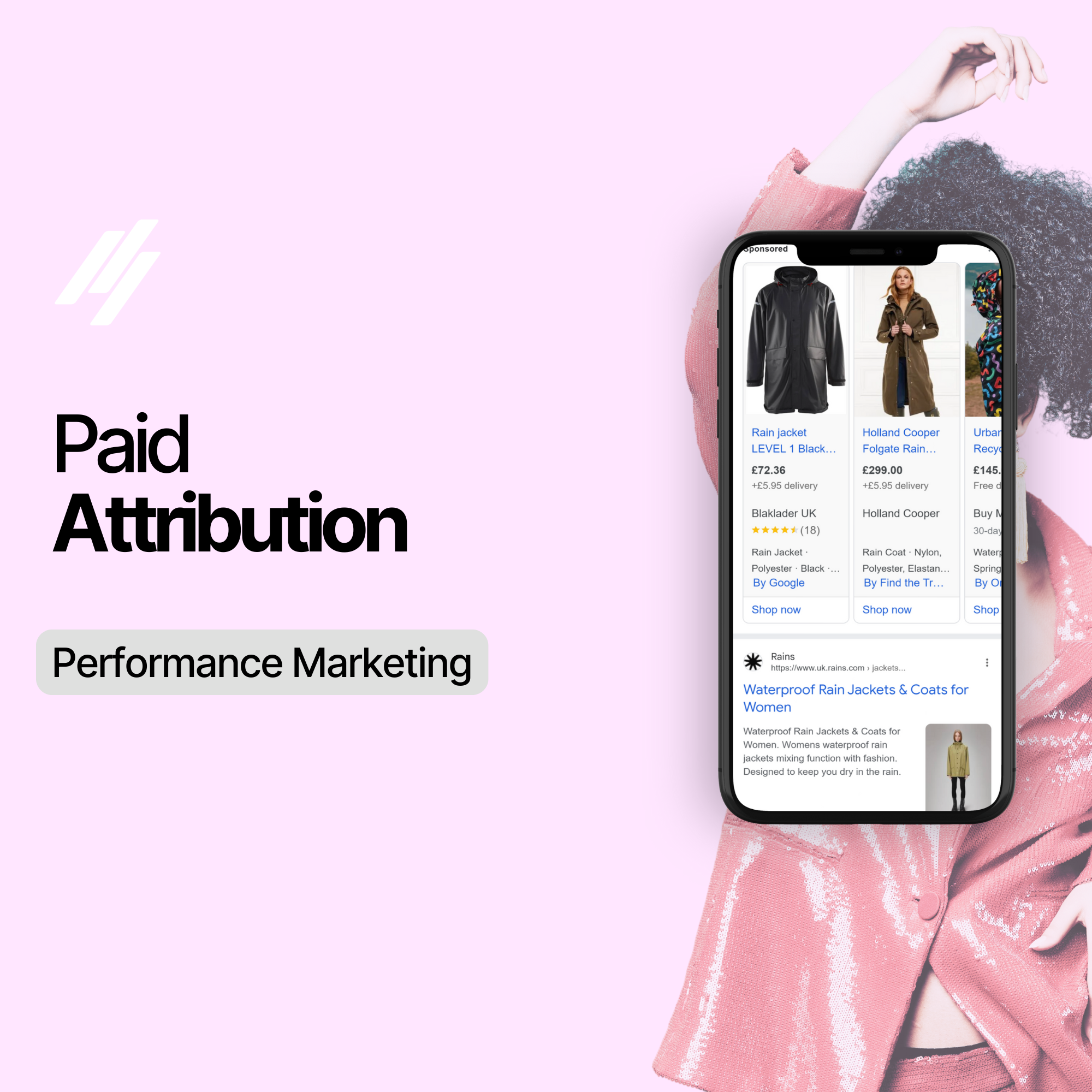When it comes to marketing, the customer journey is rarely a straight, consistent line. People can discover and interact with your brand in many ways, and the ultimate conversion path will likely be different for everyone. Remember; just like all people are different so are their journeys to purchase.
But how can you be sure that your paid investments are yielding the best possible returns? Thanks to attribution models, we can better analyse your paid campaign performance to ensure that you’re only putting money into campaigns that are contributing to conversions. In this article, we’ll take you through what attribution modelling is, its importance and the different types of attribution models.
What Is Attribution Modelling?
Attribution modelling is a method used to identify and assign value to each customer interaction that contributes to a conversion to better understand which marketing touchpoints are most effective in driving conversions.
Let’s say someone clicks on one of your ads on Google and another on Microsoft. Depending on the model that you have selected, you could see different conversion data. For example, using the last click model, the ad that the user last clicked on would gain 100% of the credit, even if they spent more time interacting with the first ad.
Why Is Attribution Modelling Important?
Traditionally, many marketers see that a particular ad gained the most conversions based on the last-click model. They will then focus on optimising this page and the content related to that ad, without optimising the other interactions that the user had before reaching that ad and converting.
Using attribution models gives you more control over how much credit each ad interaction gets for your conversions. This allows you to:
- Reach customers earlier in the purchase cycle: Find opportunities to influence customers earlier on their path to conversion.
- Match your business: Use a model that works best for how people search for what you offer.
- Improve your bidding: Optimise your bids based on a better understanding of how your ads perform.
What Are The Types Of Attribution Models?
Choosing the right attribution model is a critical decision that can significantly impact how you interpret marketing performance and allocate resources. Different models offer varying perspectives on the customer journey, and selecting the appropriate one depends on your business goals, sales cycle and the complexity of your marketing strategies.
Note: Google Ads only offers last-click and data-driven models. Microsoft Ads offers last click and last touch.
First-Click Attribution
First-click attribution, also known as the first touch model, gives 100% of the credit to the initial interaction that brought the customer into the funnel.
Best For: Brand awareness campaigns, especially when the goal is to understand the impact of the initial touchpoint.
Limitations: Neglects the influence of subsequent touchpoints that may play a significant role in the final conversion.
Last-Click Attribution
Last-click attribution assigns all the credit for a conversion to the final interaction before the purchase or desired action. Let’s say a website visitor read a blog on your website and called your company directly from the blog page, for example. Following the last click attribution model would credit 100% towards their last touchpoint, which would have been the blog post.
Best For: Simple, direct sales processes where the final touchpoint is critical.
Limitations: Ignores earlier touchpoints, potentially undervaluing channels that assist but don’t convert.
Last Touch Attribution
Last-touch attribution is very similar to last-click attribution, where it will attribute the conversion to the last ad click. The only difference with last-touch is that it will alternatively attribute the conversion to the last impression within your View-Through attribution window if there was no ad click.
Linear Attribution
Linear attribution is a multi-touch attribution model that equally distributes the credit across all touchpoints in the customer journey.
Best For: Long sales cycles where multiple touchpoints contribute equally to the conversion.
Limitations: May not accurately reflect the varying levels of influence different touch points have on the final decision.
Time Decay Attribution
Much like the linear attribution model, time decay attribution assigns credit to all of the touchpoints in the customer journey. However, time decay attribution gives more credit to touchpoints that occur closer to the time of conversion.
For example, let’s say a user visits your website directly, a week later they see an ad for your product, and then another week after that, they get an email promoting the same product where they ultimately purchase the product. Using the time decay model, the email would get 50% of the credit because it had the most immediate impact, the ad would get 30% and direct would only receive 20%. However, the user might have gotten more information from visiting your website directly and might have been waiting for the right time to make a purchase.
Best For: Businesses where recent interactions play a crucial role in the final conversion decision.
Limitations: Might undervalue early touchpoints that played a significant role in initial engagement or awareness.
Data-Driven Attribution
Data-driven attribution uses machine learning algorithms to analyse and assign value to each touchpoint based on its actual contribution to conversions. It offers a highly personalised and accurate view of the customer journey, allowing for more precise optimisation.
Best For: Businesses with sufficient data to leverage machine learning for an accurate understanding of each touchpoint’s impact.
Limitations: Requires robust data collection and analysis capabilities, which might not be feasible for small businesses.
Using The Attribution Models Report in GA4
The attribution models report can be used to compare how different attribution models impact the valuation of your marketing channels. To access the report on GA4, navigate to Advertising > Attribution > Attribution models. If you want to see the attribution for each of your campaigns, you can change the ‘Primary channel group’ to ‘campaign’ to see all of your Google Ads campaigns.
Google Ads Attribution
Google Ads requires relevant attribution models to be selected as part of the conversion creation process.
Once campaigns have begun to convert, Google Ads provides access to several in-depth Attribution Reports. These reports give us a better understanding of the paths customers take to complete conversions and how advertising campaigns work together to create conversions.
Ready to take your paid marketing to the next level?
In paid advertising, attribution models are a great way to see which of your ads are contributing to the most conversions across the entire customer journey, which can help you optimise these ads and how much money you’re putting into these ads. After all, if you see that you’re spending most of your budget on campaign A, but campaign B is the highest converting campaign, it might be worth putting more budget into campaign B.
If you’d like to learn more about how we use attribution modelling to optimise our client’s paid advertising campaigns, drop us a line. Our paid specialists are on hand to help you get the most out of your marketing campaigns to get the best results.




